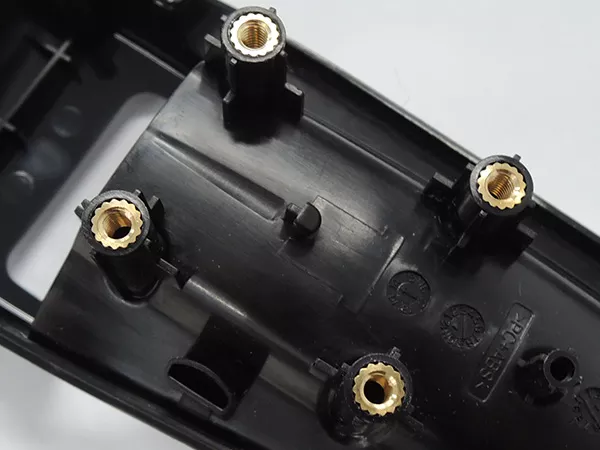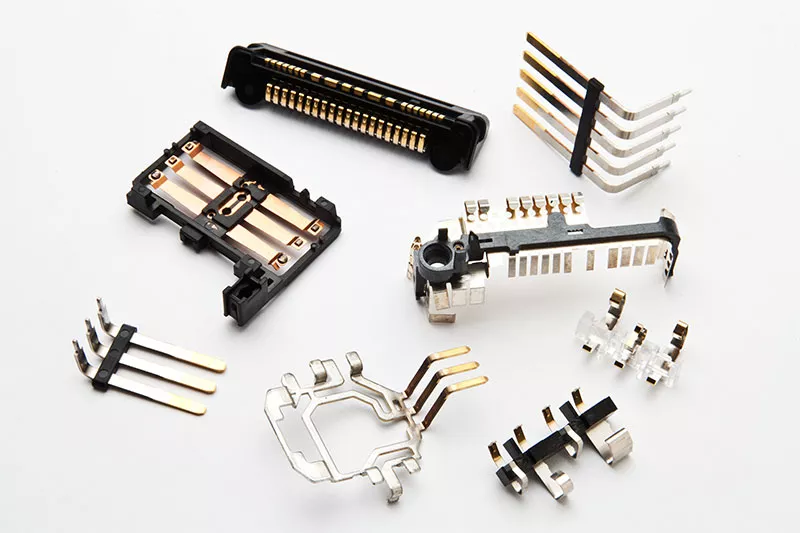Products from plastic and metal are often made using the metal injection molding process of insert molding technology. Most everyday items we come across are made of more than one material, and many are made of metal and plastic parts. As a result, metal insert injection molding has become the most popular process this year, using plastic molds to create plastic products with metal parts. Metal insert injection molding offers lower costs and faster production times. This blog post will discuss the basics of metal insert injection molding.
A brief overview of the insert molding process
Insert molding (external molding) is an insert molding process in which metal is embedded in a pre-fixed mold at a suitable location and then injected into the plastic for molding. After the mold is opened, the whole part is cooled and cured, and the plastic is wrapped around the embedded metal parts, resulting in a product with inserts such as threaded rings or electrodes.
This technique requires that the part to be inserted into the metal part has the proper structure and thickness, that the part in the mold where the insert is to be fixed can be positioned quickly and reliably, and that the plastic can be placed in the reserved hole where it flows into the fixed part. All inserts must be specially designed to ensure reliable fixation inside the plastic.

Insert molding process
Insert molding is one of the injection molding processes used to insert plastic, ceramic, and metal parts (inserts) into plastic products. The basic principle of the injection molding process for plastic or metal inserts is to first use a pre-existing substrate (base or internal component) and then insert the prefabricated part into the mold and wrap a layer of plastic around it.
Insert molding can improve the quality and reliability of a part by creating a solid bond between the insert and the plastic resin. Custom insert molding reduces assembly and labor costs and provides better part quality than manual assembly. Insert molding can effectively reduce the size and weight of the part and improve the strength and structure of the part through flexible design, increasing the reliability of the final product. Insert molding is commonly used in industries such as automotive, electronics, and medical devices, where the high strength, durability, and precision required for parts can be met by insert molding technology.
The use of metal inserts in insert molding
Before selecting a metal insert molding technology, it is essential to verify that the product design necessitates the inclusion of metal inserts. Metal inserts are often used to enhance the performance and reliability of a product. Not only are metal inserts versatile, but they can be designed in various sizes and shapes to suit the requirements of any project. If you decide to use metal insert injection molding technology for your product, you must consider various rules and the type of material required. You can only avoid the risk of harmful mold deformation to the product performance by verifying the compatibility between the metal insert and the material.
Although resins have made some progress in improving performance, inserted metal parts are usually preheated. This is because plastics encounter metals with high thermal conductivity, and preheating minimizes the quenching effect. The metal will absorb heat from the plastic, which increases the viscosity around the insert. And metal inserts are pre-expanded by preheating and shrink with the plastic during cooling, which minimizes the stress level in the mold. Therefore, regulating the temperature during the metal insert injection molding process is most important, as high or low-temperature conditions can hurt the final product.

Applications and Uses of Metal Insert Molding
Manufacturers use insert molding to produce products for a wide range of industries. Below are some products typically manufactured by one or a combination of processes, including aerospace, medical, defense, electronics, industrial, and consumer markets. Applications for metal insert injection molding include: screws, studs, spring contacts, pins, handles, electrical contacts
surface mount pads, and many more.
In Summary
Insert molding is a process used by manufacturers to combine plastic and non-plastic materials. Industries such as aerospace, defense, automotive and medical devices use parts made through this process for several reasons. These reasons include cost effectiveness, improved part reliability, and design flexibility.
Do you want to produce custom-insert molded parts? We can make your project from start to finish, whether it’s general molding, 2k injection molding, custom insert molding, medical plastic molding, metal insert molding, automotive industry, cosmetic injection molded parts, appliance injection molding, and more. Please get in touch with Elimold for your custom molded parts.

